A sepia-toned presentation on Marathi musical theatre will show the evolution of the form, right from regional Folk to Indian Classical

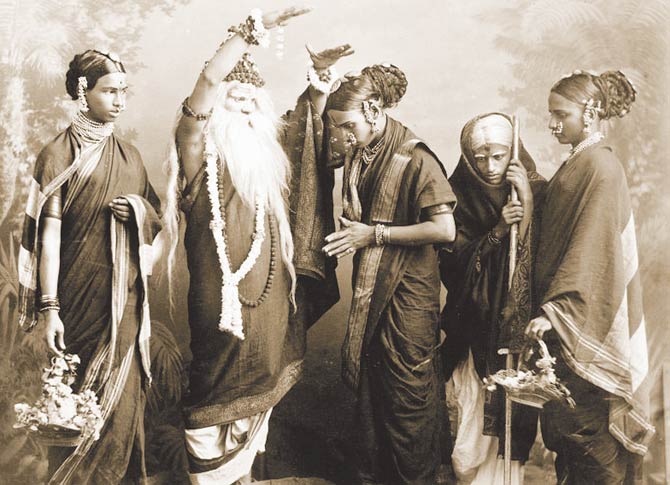
A scene from the play, Sangeet Shakuntal (early 19th century)
When we heard that a presentation titled Namana Natavara would revisit Marathi musical theatre, on the occasion of the first Freddie Mehta Memorial Programme, it piqued our mind to probe further. Soon, we connected with Dnyanesh Pendharkar, who currently helms Lalitkaladarsha Pratishthan, whose artistes will perform as part of this presentation. Turns out, the history of this theatre company was almost as colourful as the journey of musical theater that they are tracing.
The Mumbai-based Lalitkaladarsh-Pratishthan is over a century old and was founded by actor-singer Late Shri Keshavrao Bhosle and subsequently flourished under Late Bapurao Pendharkar and his son and multifaceted actor Late Bhalachandra Pendharkar.
ADVERTISEMENT
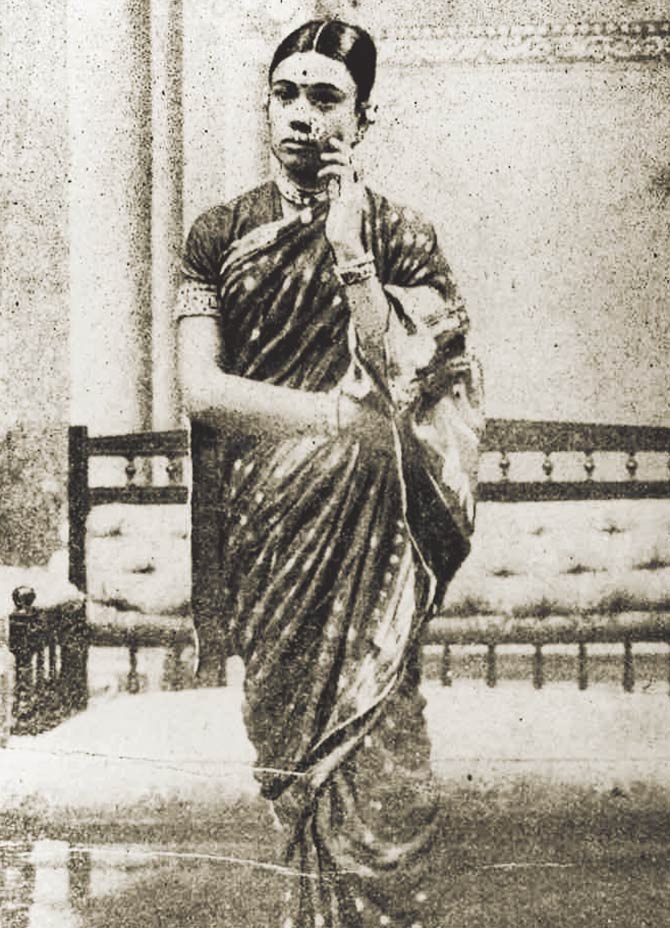
Late Keshavrao Bhosle as Indumati in a scene from Damini (1911). Artistes were inspired by Raja Ravi Verma's works as is evident from the style of this photo. Usually, men played the role of women on stage
"The company was started on January 1, 1908 in Hubli. It was given to my grandfather by Keshavrao Bhosle," says Pendharkar, who took over the company last year, after the death of his father Bhalachandra Pendharkar. "He was 94 when he died. We lost him in August but he taught me music till June. He couldn't remember my name at times but could still recall dialogues from plays and lyrics of the songs in it," he adds.
The 90-minute-long presentation will demonstrate the evolution of the music of Marathi musical theatre on the footings of regional folk and Indian classical music. "My father had rare photographs of plays from 1956 to 1988. He also had audio recordings of plays from a time when audio tapes were very expensive. His idea was to enable these to be preserved for the next generation so that they know what plays in that era were like," says Pendharkar, adding that he approached the museum to keep some of these photos as they were degenerating over the years.
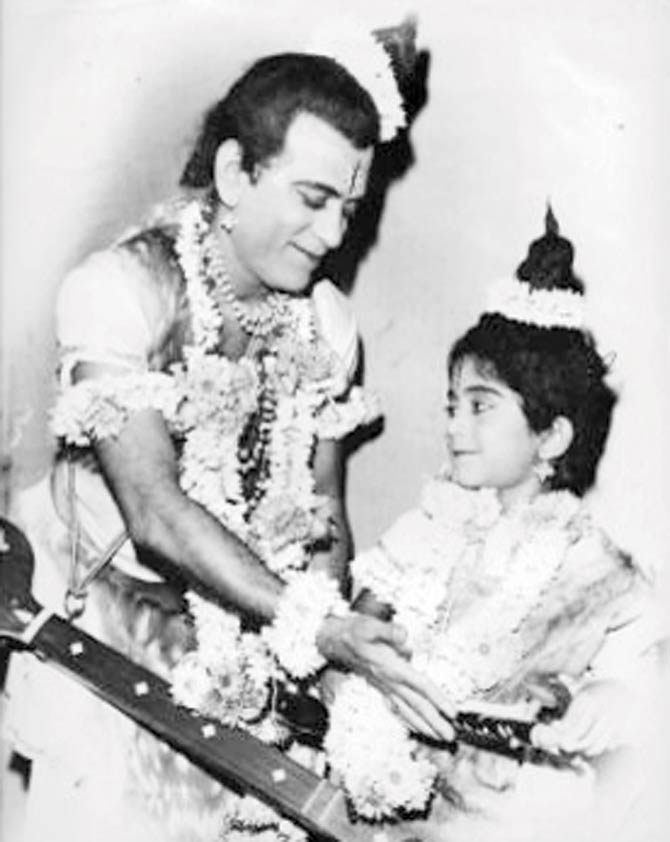
Dnyanesh Pendharkar (right) with father Bhalachandra Pendharkar dressed as Narad for a play
"It became like a white elephant as maintaining these are expensive and we had no help from the government. The museum agreed to take these photos and suggested that we do a demonstration as well to create awareness among the audience," he shares. Dr Prasanna Mangrulkar, assistant curator at the museum recalls, "A few years ago, we had done a presentation on Baithaka chi Lavni. The idea is to expose people to vernacular culture. The narration will be in English, while the songs will be in Marathi. It will allow non-Marathi speaking audiences to experience the culture."
Flashback frames
"In the early days, theatre was a always a solo act. One man would perform on stage all by himself. These were mainly devotional songs or kirtans. Vishnudas Bhave realised that this was monotonous. At that time, Urdu, Farsi and English theatre were common in Mumbai; he adapted the style from those. There was hidden propaganda for the freedom struggle too. Popular catchy tunes were used so that the audience could connect with them. The form was taken from the street to behind the curtain and given a stage. The music moved from Folk to a Classical base. Men performed the roles of women too," shares Pendharkar.
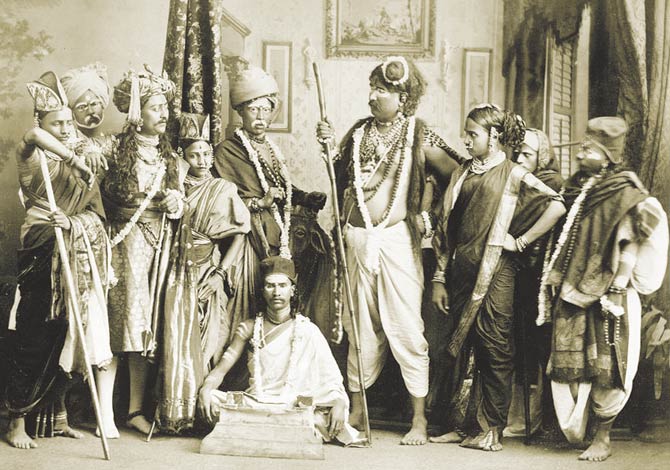
A scene from an unknown play
Pendharkar and his team including wife Neelakshi Pendharkar and artiste Dhananjay Mahiskar will perform with organs. "Earlier, only the tanpura was used till someone saw an organ in a church and realised it could be used for performances. We will also look at Nandi, a type of singing, where people performed without microphones. The idea was to describe God and showcase the range of the artiste's voice to the audience while doing so as acoustics differ in an auditorium full of people and in an empty one. Today, we do mike tests in empty auditoriums, which is actually the reverse," he explains.
Bhalachandra Pendharkar had taken over the reins of Lalitkaladarsha in 1942. The success story began with the first new play he did called Swamin, scripted by Purshottam Bhaskar Bhave. "During my father's time, the theatre company had close to 70 members. They were paid a monthly salary, irrespective of whether a play was staged. Their meals and the education of their children was also taken care of by the company," recalls Pendharkar. "The coming of cinema changed things. Artistes were paid per show. Play formats changed too. Their duration was shortened from six to three hours; songs that lasted for about the 30 minutes were reduced to 10 minutes, he adds.
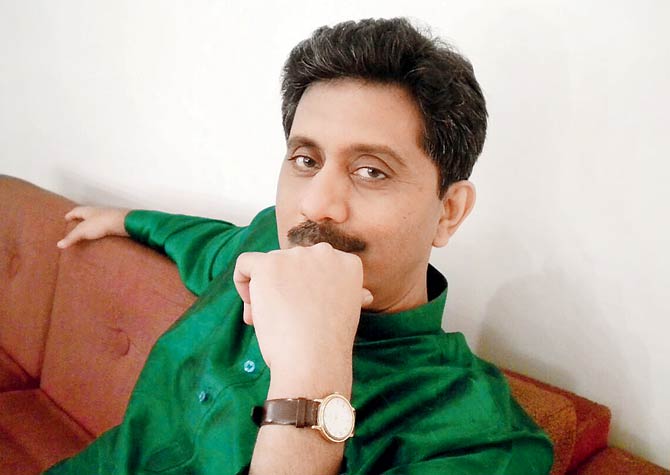
Dnyanesh Pendharkar
Times for revival
In 1960, while the buzz around Marathi musical theatre seemed to subside Bhalachandra Pendharkar produced a new play, PanditRaj Jagannath about the Sanskrit and Urdu poet in the court of Mughal Emperor Shahajahan. It received huge public applause due to its blend of production, script, music and a team of experienced artistes. The play completed a record number of over 1,000 shows.
"Today's writers don't create such scripts anymore. Things were pretty advanced earlier. In 1922, my grandfather made a trailer for his play that was shown at Novelty (theatre). He created a box theatre and used dimmer lights too. For his play Shree in 1926, which was on the subject of horse racing and betting, he went to the Mahalaxmi Racecourse and shot the races. When the scene ended on the projector screen, life-like sketches created by the artistes brought it alive for the audience," he concludes, dipping into reams of nostalgia.
 Subscribe today by clicking the link and stay updated with the latest news!" Click here!
Subscribe today by clicking the link and stay updated with the latest news!" Click here!







